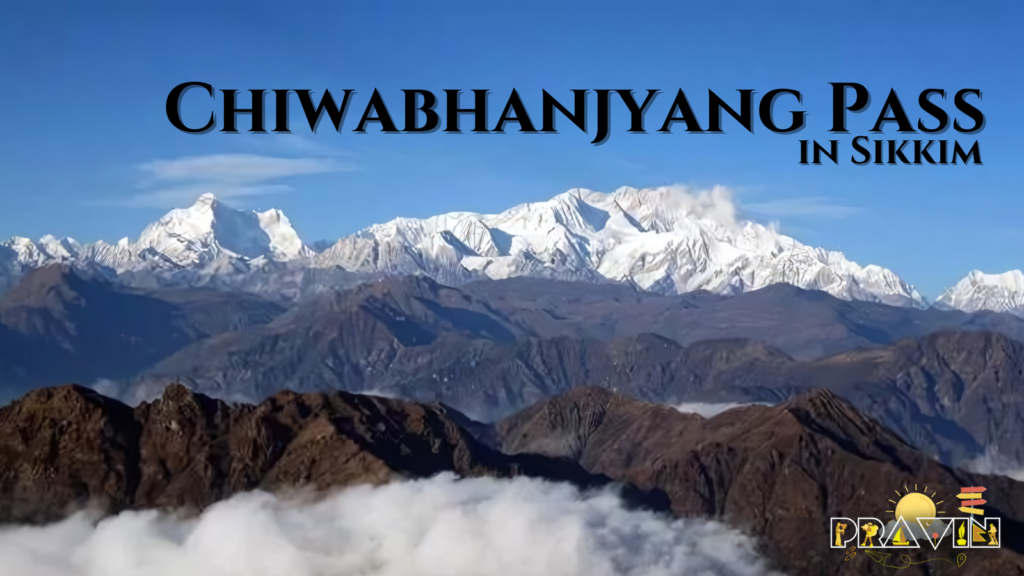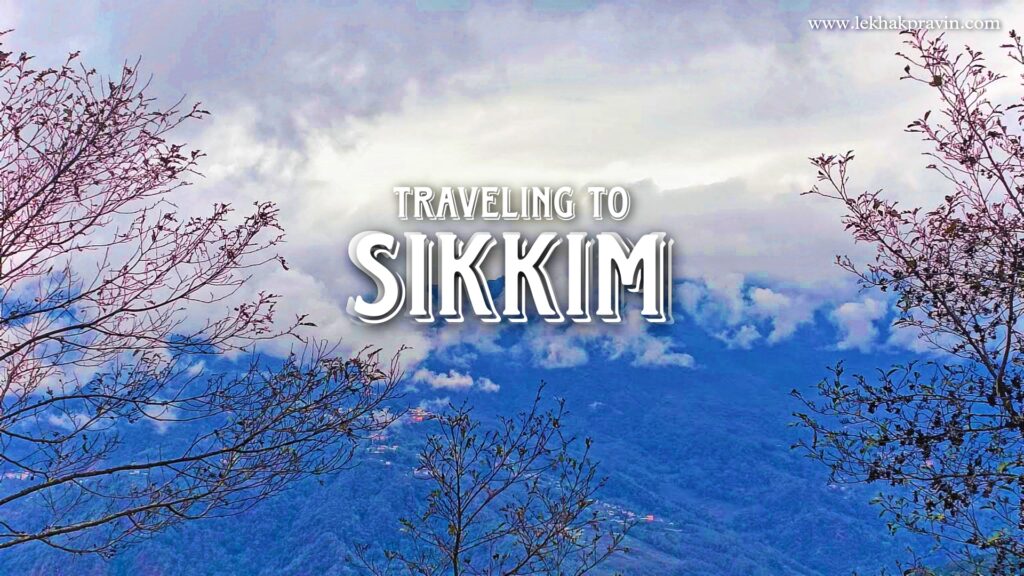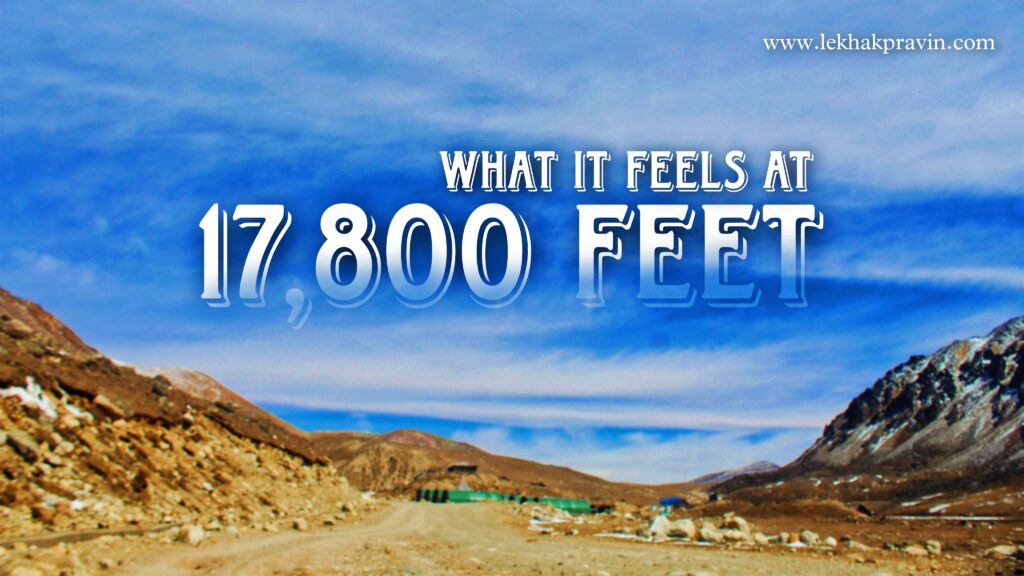Chiwabhanjang Pass, also known as Chio Bhanjyang Pass, is a high mountain pass located in the Indian state of Sikkim, part of the Himalayan mountain range. At an altitude of 10,500 feet (3,200 meters), it serves as a vital border trading post between India and Nepal and offers breathtaking views of the surrounding snow-capped mountains and valleys.
The pass is part of an ancient trade route and is now a significant tourist attraction, drawing visitors who are keen to witness the strategic Indo-Nepal border, experience the unique culture of the region, and enjoy the stunning landscapes.
Significance of Chiwabhanjang Pass
Chiwabhanjang holds historical, strategic, and economic significance. Historically, it was a major trading post on an ancient trade route, facilitating trade between India and Nepal. Today, it remains a crucial point of trade between the two countries, enhancing economic ties.

The pass is also of great military significance. It serves as an open trading border post between India and Nepal and is guarded by the Indian Army and Nepal Army. The presence of soldiers and the strategic importance of the pass are evident, making it a significant point of interest for those intrigued by geopolitics and border security.
Chiwabhanjang Pass Border Country
Chiwabhanjang Pass is located on the border between India and Nepal, specifically between the Indian state of Sikkim and Taplejung District of Nepal. The border is clearly demarcated, and tourists can see the border pillars that separate the two countries.
The pass is around 110 km from the capital city of Gangtok and is accessible by a scenic drive through winding mountain roads. On a clear day, you can witness the majestic peaks of the eastern Himalayas and the vibrant border activities.
Chiwabhanjang Pass War History
Unlike Nathu La Pass, Chiwabhanjang does not have a direct war history. However, the pass has been a witness to the changing dynamics of Indo-Nepal relations over the years. The border at Chiwabhanjang has remained peaceful, with both Indian and Nepalese forces working together to maintain security and facilitate trade.
How to Reach Chiwabhanjang Pass
To reach Chiwabhanjang Pass, you need to travel to Gangtok, the capital of Sikkim. Gangtok is well-connected by road from Siliguri, which is approximately 114 km away. You can reach Siliguri by flight to Bagdogra airport or by train to New Jalpaiguri railway station.

From Gangtok, Chiwabhanjang is about 110 km and can be reached by a 4-5 hour drive. The route is scenic, passing through lush forests, rugged terrains, and offering glimpses of the majestic Himalayan peaks. Both Indian and foreign nationals are allowed to visit Chiwabhanjang Pass, but permits must be obtained in advance.
Best Time to Visit Chiwabhanjang Pass
The best time to visit Chiwabhanjang Pass is from March to June and from September to November when the weather is relatively mild and the roads are accessible. During these months, the skies are clear, providing stunning views of the surrounding mountains and valleys.
The monsoon months (July to August) see heavy rainfall, which can lead to landslides and road blockages. The winter months (December to February) bring snowfall, and the pass can be closed due to the harsh weather conditions. However, the snow-covered landscape during this time is equally mesmerizing for those who can brave the cold.
Chiwabhanjang Pass Height
Chiwabhanjang Pass is located at an altitude of 10,500 feet (3,200 meters) above sea level. While not as high as Nathu La Pass, it still requires visitors to acclimatize properly to avoid altitude sickness.
Height of Chiwabhanjang Pass in feet is 10,500 feet.
Height of Chiwabhanjang Pass in meters is 3,200 meters.
My Experience of Chiwabhanjang Pass
Visiting Chiwabhanjang was a unique experience. The journey from Gangtok through the winding roads was an adventure in itself, with stunning views of the mountains and valleys. As we gained altitude, the air became cooler, and the vegetation changed from lush green to alpine.
Reaching the pass, the sight of the border pillars and the Indian and Nepalese soldiers standing guard was fascinating. The friendly interaction between the soldiers of both countries reflected the cordial relations between India and Nepal. The highlight was the panoramic view of the Himalayas and the opportunity to interact with the locals and learn about their culture.
Things to Keep in Mind While Visiting Chiwabhanjang Pass
Permits: Both Indian and foreign nationals can visit Chiwabhanjang Pass, but special permits are required. These can be obtained through a registered tour operator in Gangtok.
Acclimatization: The high altitude requires proper acclimatization. Spend a day or two in Gangtok before heading to Chiwabhanjang to adjust to the altitude.
Weather: The weather can change rapidly. Dress in layers and carry warm clothing, even during the summer months.
Physical Fitness: The high altitude and winding roads can be challenging. Ensure you are physically fit and consult a doctor if you have any health concerns.
Respect the Environment: Do not litter, and respect the local customs and traditions. The area is of significant cultural importance.
History of Chiwabhanjang Pass
Chiwabhanjang Pass has been a vital trade route for centuries, linking India with Nepal. The pass has witnessed the ebb and flow of trade and cultural exchanges between the two countries.
In recent years, the pass has gained prominence as a tourist destination, offering a glimpse into the unique border dynamics and the stunning natural beauty of the region. The opening of the pass for tourism has boosted the local economy and fostered greater people-to-people ties between India and Nepal.
Conclusion
Chiwabhanjang Pass is a must-visit for those interested in exploring the lesser-known gems of the Himalayas. With its strategic importance, stunning landscapes, and rich cultural heritage, it offers a unique and memorable experience.
If you are planning a trip to Sikkim, consider including Chiwabhanjang in your itinerary. Prepare well, respect the environment and local customs, and enjoy the remarkable journey. The warmth of the people and the beauty of the place will leave a lasting impression on you.
FAQs Related to Chiwabhanjang Pass
1. What is the best time to visit Chiwabhanjang Pass?
The best time to visit Chiwabhanjang is from March to June and from September to November when the weather is pleasant and the roads are accessible. During these months, the temperature is moderate, and you can enjoy clear views of the surrounding mountains and valleys.
The monsoon months (July to August) can bring heavy rainfall, leading to landslides and road blockages. The winter months (December to February) can bring snowfall, which can make the roads impassable.
2. Who can visit Chiwabhanjang Pass?
Both Indian and foreign nationals are allowed to visit Chiwabhanjang Pass. However, visitors must obtain special permits to access the pass.
These permits can be arranged through registered tour operators in Gangtok, the capital city of Sikkim. The process usually involves providing identification documents and adhering to the guidelines set by the authorities.
3. How high is Chiwabhanjang Pass?
Chiwabhanjang Pass is located at an altitude of 10,500 feet (3,200 meters) above sea level. While not as high as Nathu La Pass, this altitude still means that the air is thinner and the temperature can be quite cool, even during the summer months.
Visitors should be prepared for the effects of high altitude and take necessary precautions to avoid health issues while visiting the pass.
4. How to reach Chiwabhanjang Pass?
Chiwabhanjang Pass can be reached from Gangtok, which is about 110 km away. To get to Gangtok, travelers can fly to Bagdogra airport or take a train to New Jalpaiguri railway station, both of which are located in Siliguri, West Bengal.
From Siliguri, it is a 4-5 hour drive to Gangtok. Once in Gangtok, visitors need to arrange for a permit to visit Chiwabhanjang Pass. The journey from Gangtok to the pass takes approximately 4-5 hours by road, and it offers breathtaking views of the mountainous terrain.
5. What is the significance of Chiwabhanjang Pass?
Chiwabhanjang Pass holds historical, strategic, and economic significance. Historically, it was a crucial part of an ancient trade route, facilitating trade between India and Nepal. Today, it serves as an open trading post between the two countries, enhancing economic ties.
The presence of Indian and Nepalese soldiers at the border reflects the cordial relations between the two nations and the strategic importance of this region.
6. Is Chiwabhanjang Pass open all year round?
The accessibility of Chiwabhanjang Pass can be affected by weather conditions. The pass is usually open from March to June and from September to November when the weather is relatively mild and the roads are in good condition.
During the monsoon months (July to August), heavy rainfall can lead to landslides and road blockages. In the winter months (December to February), snowfall can make the roads impassable. It is advisable to check the latest travel advisories and weather conditions before planning a trip to Chiwabhanjang Pass.
7. What should I carry while visiting Chiwabhanjang Pass?
When visiting Chiwabhanjang Pass, it is essential to carry warm clothing regardless of the season, as temperatures can be quite cool at high altitudes. Necessary permits and identification documents must be kept handy.
It is also advisable to carry basic medical supplies, especially medication for altitude sickness. Sunglasses, sunscreen, and a hat can protect against the strong sun at high altitudes. Additionally, carrying some snacks and water is recommended, as there are limited facilities at the pass.
8. Is photography allowed at Chiwabhanjang Pass?
Photography is generally allowed at Chiwabhanjang Pass, but visitors should always follow the instructions of local authorities and military personnel regarding any restrictions.
It is advisable to take photos of the scenic views and the landscape while respecting the privacy of the local people and military personnel. If in doubt, it is always best to ask for permission before taking photographs.
9. Can I experience altitude sickness at Chiwabhanjang Pass?
Yes, due to the high altitude of 10,500 feet, visitors may experience altitude sickness, also known as acute mountain sickness (AMS). Symptoms include headache, nausea, dizziness, and shortness of breath.
It is crucial to acclimatize properly by spending a couple of days in Gangtok before ascending to Chiwabhanjang Pass. Staying hydrated and avoiding alcohol and strenuous activity can also help mitigate the effects of altitude sickness.
10. Are there any accommodations available at Chiwabhanjang Pass?
There are no accommodations available at Chiwabhanjang Pass itself due to its remote location. Visitors usually stay in Gangtok, which has a wide range of accommodations, including hotels and guesthouses catering to various budgets.
From Gangtok, travelers can make a day trip to Chiwabhanjang Pass. It is advisable to start the trip early in the morning to ensure enough time to explore and return safely.




